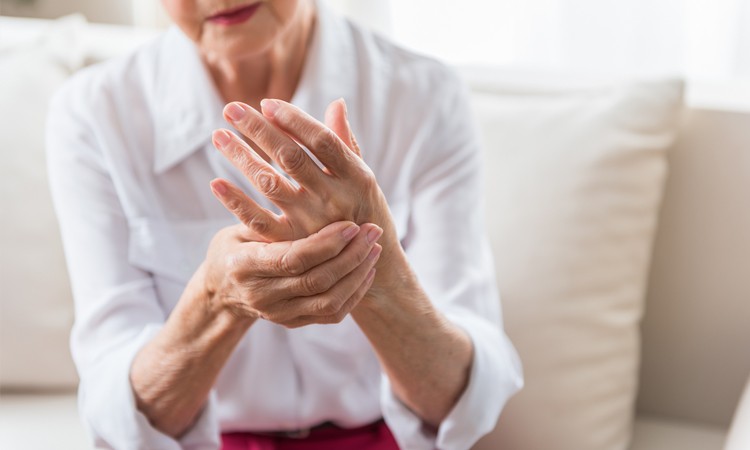About 20% of people who have rheumatoid arthritis (RA) will develop a rheumatoid nodule. It is common to find nodules in joints exposed to repeated trauma, such as fingers and elbows.
Although a rheumatoid nodule is not life-threatening in most cases, it may indicate the possibility of underlying problems. If you have concerns, consult your physician.
What is a Rheumatoid Nodule?
A rheumatoid nodule is a firm, usually painless bump under the skin that develops in someone who has rheumatoid arthritis. One-fourth of Rheumatoid arthritis patients experience this common dermatologic manifestation – and, like other autoimmune diseases, women experience it three times more than men.
As an autoimmune disease, rheumatoid arthritis causes the body’s immune system to attack healthy tissues. As a result, rheumatoid arthritis causes swelling, pain, and motion difficulties in otherwise healthy joints.
With age, the joints’ shape may change, causing pain during movement. It is common for people with rheumatoid arthritis to have symptoms on both sides of their bodies.
Where Else Can They Appear?
Rheumatoid nodules mainly affect your hands, knuckles, elbows, and heels, and they also affect pressure points and any area of your body affected by rheumatoid arthritis.
The longer you live with rheumatoid arthritis, nodules may begin to show up in other organs, such as your heart, lungs, and vocal cords.
If you are bedridden, it may appear in parts of your body that touches the bed. Parts like:
- Hip
- Heel
- Achilles tendon
- Tailbone
- back of your head
What Causes Rheumatoid Nodules?
The most common cause of rheumatoid nodules is rheumatoid arthritis. However, some patients are more susceptible to rheumatoid nodules than others. If you have a rheumatoid nodule, it can indicate an increased immune system activity or inflammation.
Researchers believe rheumatoid nodules result from the production of a protein called rheumatoid factor. Therefore, most people with rheumatoid nodules test positive for rheumatoid factor, but not every person who tests positive for rheumatoid factor develops nodules.
Some other factors that can cause rheumatoid nodules include:
- Smoking: Research shows that smokers may be susceptible to rheumatoid nodules.
- Methotrexate or other arthritis drugs: A condition known as methotrexate-induced accelerated nodulosis may develop in people taking methotrexate, which causes nodules on the feet, hands, and ears.
- Chronic rheumatoid arthritis: The risk of developing nodules is higher for people with more severe symptoms because they may also have higher rheumatoid factors.
- An injury near a pressure point: The likelihood of developing rheumatoid nodules is higher at pressure points. If you suffer a cut or bruise on those areas, you are more likely to have a rheumatoid nodule.
Can Rheumatoid Nodules be Cancerous?
No, they cannot cause cancer. A small lump may develop in the lungs or elsewhere in the body. But, they do not cause lung cancer. However, nodules can rupture in some cases, causing a collapsed lung.
How do you Treat Rheumatoid Nodules?
Rheumatoid nodules usually do not require treatment unless they cause pain or other symptoms. Instead, management of the underlying disease should be the goal of the therapy.
Treatments for rheumatoid arthritis may include the following:
- DMARDs (disease-modifying antirheumatic drugs): Some medications can shrink rheumatoid nodules, and Rituximab seems to be the most successful.
- Steroids: Steroid medications, such as can reduce the inflammation that causes pain and other symptoms.
- Surgical procedure: A lump that becomes infected or causes severe symptoms, such as the inability to use the joint, may need to be removed surgically. Nodules often reappear in the same place after removal.
If a rheumatoid nodule is infected, antibiotics are needed immediately, either intravenously or orally. It might be necessary to drain an infection or remove nodules in some cases.
How can you Prevent Rheumatoid Nodules?
If you have RA, it may be impossible to prevent rheumatoid nodules. But if you manage your rheumatoid arthritis properly, you can help control the symptoms.
Here are some of the ways to reduce your chances of rheumatoid nodules if you have RA:
- Follow your doctor’s orders and take your medications.
- Consult your doctor for any unusual symptoms.
- Quit smoking.
- Upgrade your lifestyle to improve your mobility.
Conclusion
While rheumatoid nodules are usually harmless, patients often experience adverse psychological effects due to impaired mobility and deformity. Medical care should cater to each patient’s physical and psychological needs in collaboration with their physicians.
